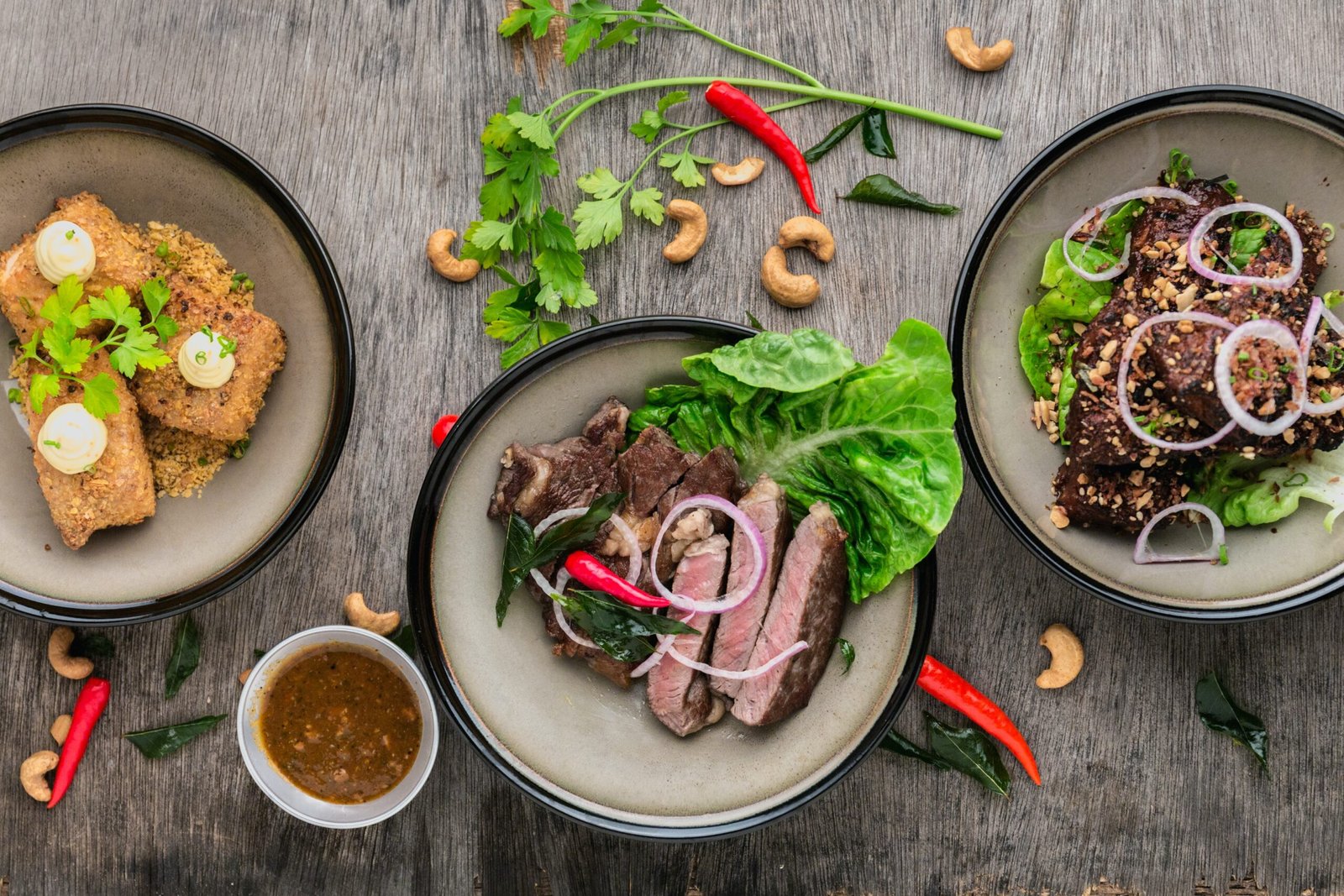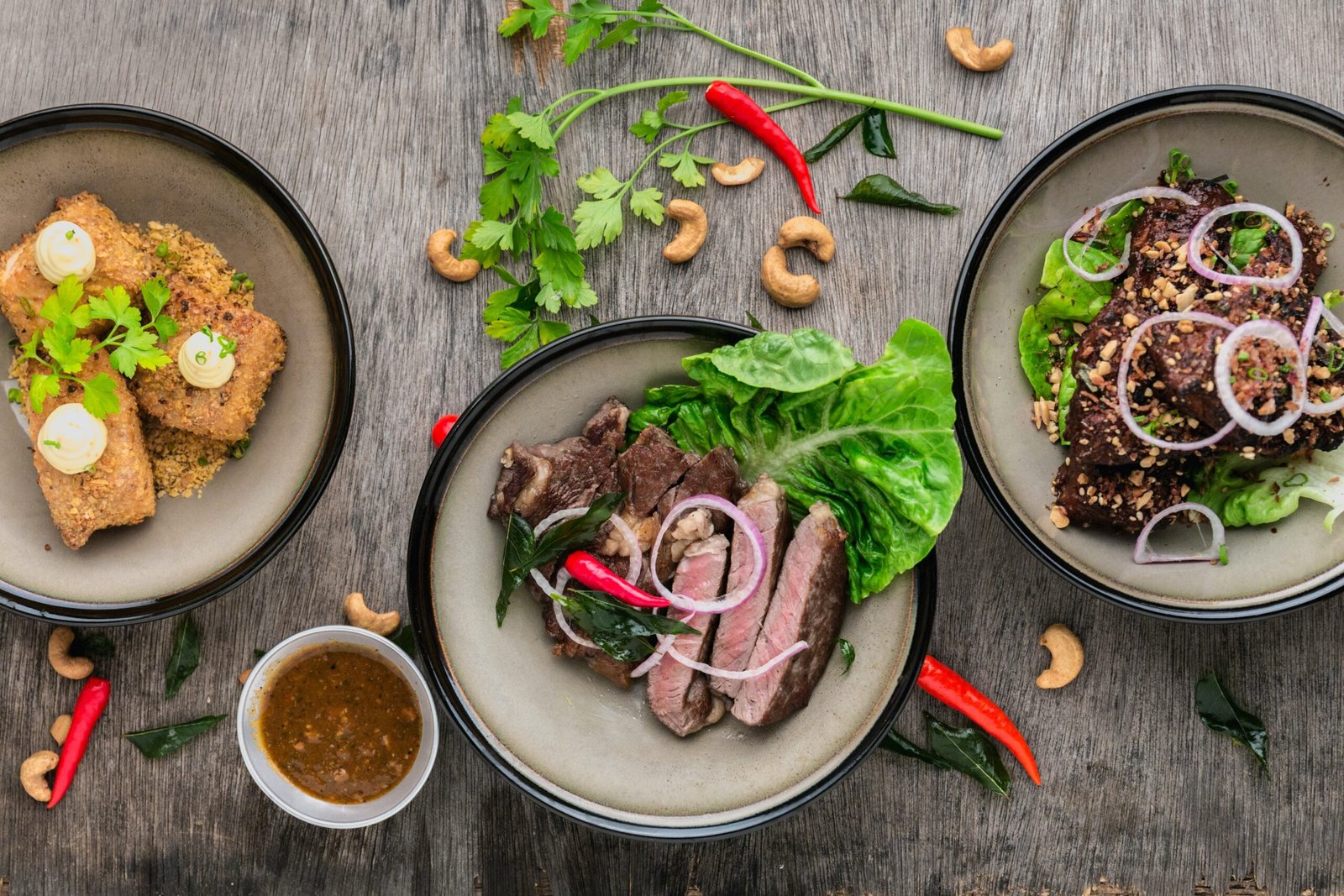Imagine a world where every meal is bursting with vibrant colors, natural flavors, and nutrient-rich ingredients. That’s the idea behind the raw food diet – a nutritional philosophy that celebrates the power of unprocessed, plant-based foods. In this article, we’ll explore the ins and outs of the raw food diet, understand its potential benefits and challenges, and discover how this fresh perspective on dietary choices can revolutionize the way you fuel your body. Get ready to embark on a culinary journey that will leave you craving the delicious simplicity of raw, wholesome ingredients.

This image is property of images.unsplash.com.
What is a Raw Food Diet?
Definition
A raw food diet, also known as a raw vegan diet or living foods diet, is a dietary approach that emphasizes the consumption of uncooked, unprocessed, and mostly plant-based foods. The philosophy behind this diet is that cooking and processing food can diminish its nutritional value and enzymes, which are believed to aid in digestion and promote overall health.
Principles
The core principles of a raw food diet revolve around the idea of consuming foods in their natural state. This means eating fruits, vegetables, nuts, seeds, and sprouted grains that have not been cooked or heated above 118 degrees Fahrenheit (48 degrees Celsius). The diet excludes animal products, such as meat, fish, dairy, and eggs, as well as processed foods, refined sugars, and additives.
Types of Raw Food Diets
There are various types of raw food diets that individuals may follow, depending on their personal preferences and health goals. Some common variations include:
-
Raw Vegan Diet: This type of raw food diet excludes all animal products, including meat, fish, dairy, and eggs.
-
Raw Vegetarian Diet: Similar to a raw vegan diet, this approach allows for the inclusion of certain animal products, such as raw honey, raw milk, or raw cheese.
-
Raw Omnivorous Diet: This type of raw food diet includes raw animal products, such as raw meat or raw fish, along with plenty of raw fruits, vegetables, nuts, and seeds.
-
Raw Paleo Diet: Combining the principles of a raw food diet with the principles of the paleo diet, this approach focuses on consuming raw, unprocessed foods that our ancestors would have eaten, including raw meats, raw fish, fruits, vegetables, nuts, and seeds.
It’s important to note that while a raw food diet typically consists of plant-based foods, there are variations that allow for the inclusion of certain animal products. The key is to focus on consuming foods in their most natural, unprocessed form.
Pros and Cons of a Raw Food Diet
Benefits of a Raw Food Diet
-
Increased nutrient intake: Raw fruits, vegetables, nuts, and seeds are rich in vitamins, minerals, and antioxidants that are beneficial for overall health.
-
Improved digestion: Enzymes present in raw foods are believed to aid in digestion and promote better nutrient absorption.
-
Weight management: The high fiber content of raw foods can help promote feelings of fullness and prevent overeating, potentially leading to weight loss or maintenance.
-
Enhanced energy levels: Raw foods are nutrient-dense and can provide a natural energy boost without the need for stimulants like caffeine.
Challenges of a Raw Food Diet
-
Nutrient deficiencies: Following a raw food diet can make it challenging to obtain certain nutrients, such as vitamin B12, iron, and omega-3 fatty acids, which are typically found in animal products.
-
Limited food options: Cutting out cooked and processed foods can restrict the variety of foods available, leading to potential monotony and limited meal options.
-
Social limitations: Adhering to a raw food diet may pose challenges in social settings, where cooked foods and animal products are commonly served.
-
Time and effort: The preparation and planning required for a raw food diet can be time-consuming and may require more effort compared to a standard diet.
Despite the potential challenges, many individuals find that the benefits of a raw food diet outweigh the drawbacks. It is essential to consider your personal goals, lifestyle, and nutritional needs when deciding whether a raw food diet is the right choice for you.
Impact of Raw Food Diet on Health
Nutritional Aspects
A well-planned raw food diet can provide a wide range of essential nutrients. Raw fruits and vegetables are abundant in vitamins, minerals, and antioxidants, which can support immune function, cellular health, and overall well-being. It’s important to ensure a varied and balanced intake of different types of fruits, vegetables, nuts, and seeds to meet your nutritional needs.
Weight Loss and Maintenance
Many individuals turn to a raw food diet for weight loss or weight management. The high fiber content of raw foods can help promote satiety and reduce calorie intake, potentially aiding in weight loss efforts. However, it’s crucial to monitor portion sizes and ensure an adequate intake of essential nutrients to support overall health.
Disease Prevention
A raw food diet rich in fruits, vegetables, and whole foods has been associated with a lower risk of chronic diseases such as heart disease, certain types of cancer, and diabetes. The high antioxidant content of raw foods can help neutralize free radicals and reduce inflammation, protecting against cellular damage and disease development.
Digestive Health
The enzymes present in raw foods are believed to promote better digestion and absorption of nutrients. Additionally, the high fiber content of raw fruits and vegetables can support a healthy digestive system and assist with regular bowel movements. However, some individuals may experience digestive issues such as bloating or gas when transitioning to a raw food diet, which should normalize over time as the body adjusts.
Energy Levels
Raw foods are known for their high nutrient density, which can provide a natural energy boost. Unlike processed foods that often lead to energy crashes, raw foods can sustain energy levels throughout the day without relying on stimulants like caffeine. Many individuals report increased vitality and improved mood when following a raw food diet.
Raw Food Diet and Environmental Sustainability
Reduced Carbon Footprint
Choosing a raw food diet can have a positive impact on the environment by reducing carbon emissions. Raw foods generally require less energy for processing and transportation compared to processed and packaged foods. Additionally, by focusing on plant-based foods, a raw food diet reduces the carbon footprint associated with animal agriculture.
Water Conservation
The production of animal products requires significantly more water compared to the cultivation of plant-based foods. By following a raw food diet that emphasizes plant-based foods, you can contribute to water conservation efforts and reduce the strain on water resources.
Preservation of Ecosystems
The raw food diet promotes the consumption of whole, unprocessed foods, which often come from sustainable farming practices that prioritize environmental stewardship. By supporting local and organic agriculture, individuals following a raw food diet contribute to the preservation of ecosystems and biodiversity.
Sustainable Agriculture
The emphasis on plant-based foods in a raw food diet can drive demand for sustainable farming practices. This includes organic farming, permaculture, and regenerative agriculture, which prioritize soil health, biodiversity, and natural resource conservation. Choosing organic and locally sourced raw foods can further support sustainable farming practices.

This image is property of images.unsplash.com.
Safety and Risks of a Raw Food Diet
Food Safety Concerns
Consuming raw foods carries a higher risk of foodborne illnesses compared to eating cooked foods. Raw fruits and vegetables can be contaminated with harmful bacteria, such as E. coli and Salmonella. It is crucial to thoroughly wash and clean raw produce before consumption. Additionally, practicing good hygiene and proper food handling techniques can minimize the risk of foodborne illnesses.
Risk of Nutrient Deficiencies
Eliminating certain food groups, such as animal products, can increase the risk of nutrient deficiencies if not properly planned. Key nutrients to monitor include vitamin B12, iron, calcium, and omega-3 fatty acids. It is recommended to consult with a healthcare professional or registered dietitian to ensure adequate nutrient intake or consider appropriate supplementation.
Possible Digestive Issues
Transitioning to a raw food diet may initially cause digestive discomfort for some individuals. Raw foods can be more challenging to digest compared to cooked foods. However, the body can adapt over time. It is essential to listen to your body, make gradual dietary changes, and ensure proper food combining to support digestion.
Special Considerations
Pregnant or breastfeeding women, children, and individuals with certain health conditions may require additional considerations when following a raw food diet. It is crucial to seek guidance from a healthcare professional or registered dietitian to assess individual needs and ensure proper nutrient intake.
Transitioning to a Raw Food Diet
Gradual Transition
Transitioning to a raw food diet gradually can help ease the process and avoid potential digestive issues. Start by incorporating more raw fruits, vegetables, nuts, and seeds into your meals while gradually reducing the consumption of cooked and processed foods. This approach allows the body to adapt gradually to the new dietary pattern.
Tips for Success
-
Plan and prepare meals in advance: Having raw foods readily available and well-prepared can make it easier to stick to a raw food diet.
-
Include a variety of foods: Ensure a diverse intake of fruits, vegetables, nuts, seeds, and sprouted grains to provide a broad range of nutrients.
-
Seek support: Joining a raw food community or finding a mentor can provide valuable support, guidance, and recipe ideas.
-
Stay hydrated: Drink plenty of water throughout the day to support digestion and overall health.
Managing Cravings
Cravings for cooked or processed foods can arise during the transition to a raw food diet. To manage cravings, it can be helpful to identify and address the underlying causes, such as emotional eating or habits associated with certain foods. Finding satisfying and flavorful raw food alternatives can also help reduce cravings and make the transition more enjoyable.

This image is property of images.unsplash.com.
Raw Food Diet and Food Preparation
Equipment and Tools
Certain kitchen appliances and tools can be helpful when following a raw food diet. These include a high-speed blender, food processor, dehydrator, spiralizer, and quality knives. These tools can assist in preparing a variety of raw food dishes, from smoothies and sauces to raw desserts and vegetable noodles.
Food Storage
Proper food storage is crucial to maintain the freshness and quality of raw foods. Some tips for food storage in a raw food diet include:
-
Use airtight containers: Store prepared raw foods in airtight containers to preserve freshness and prevent moisture loss.
-
Utilize the refrigerator and freezer: Some raw foods, such as sprouts, fruits, and vegetables, can be stored in the refrigerator. Others, like nuts and seeds, can be stored in the freezer to extend their shelf life.
-
Practice proper rotation: Regularly check food items for freshness and use the “first in, first out” principle to ensure that older items are used before newer ones.
Meal Planning and Recipes
Meal planning is essential when following a raw food diet to ensure a balanced and varied nutrient intake. Consider including a combination of raw fruits, vegetables, nuts, seeds, and sprouted grains in each meal. Raw food recipe books, online resources, and raw food communities can provide inspiration and guidance when planning meals.
Myths and Misconceptions about Raw Food Diet
Lack of Nutrients
One common myth about a raw food diet is that it may lead to nutrient deficiencies. While it is essential to plan a raw food diet carefully to ensure adequate nutrient intake, a well-balanced and varied raw food diet can provide all the essential nutrients the body needs.
Difficulty in Meeting Nutritional Needs
Another misconception is that it may be challenging to meet nutritional needs on a raw food diet. By including a wide variety of raw fruits, vegetables, nuts, seeds, sprouted grains, and properly planned supplementation if necessary, individuals can meet their nutritional needs on a raw food diet.
Boredom with Food Options
Some individuals may be concerned that a raw food diet may be boring or lack variety. However, there are countless delicious and creative recipes available that showcase the vibrant flavors and textures of raw foods. Expanding culinary skills and trying new recipes can help combat any potential boredom.
Success Stories and Testimonials
Real-life Experiences
Numerous individuals have experienced positive health outcomes and improvements in overall well-being when following a raw food diet. Personal stories and testimonials often highlight weight loss, increased energy levels, clearer skin, improved digestion, and a greater sense of well-being.
Improvements in Health and Well-being
Many individuals report significant improvements in various health conditions, including metabolic disorders, allergies, autoimmune diseases, and digestive issues, after adopting a raw food diet. While individual results may vary, the high nutrient content and potential anti-inflammatory properties of a raw food diet can contribute to overall health improvements.
Tips from Successful Raw Food Enthusiasts
Successful individuals who have thrived on a raw food diet often share tips and strategies that have worked for them. These tips may include meal planning, finding raw food substitutes for favorite cooked dishes, seeking support from the raw food community, and staying committed to a balanced and varied raw food intake.
Conclusion
A raw food diet offers a fresh perspective on dietary choices, emphasizing the consumption of uncooked, unprocessed, and mostly plant-based foods. While there are benefits associated with this diet, such as increased nutrient intake and potential improvements in health, it’s crucial to consider individual needs, lifestyle, and potential challenges. Transitioning to a raw food diet gradually, planning meals, and seeking support can help maximize the benefits and ensure a balanced and enjoyable dietary experience. Ultimately, the decision to follow a raw food diet should be based on personal preference and the ability to meet nutritional needs while enjoying a variety of flavors and textures.

